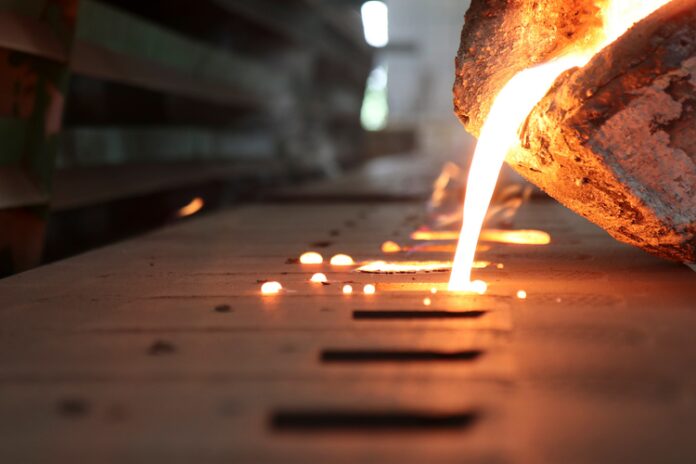People often debate about what material is the best for sand casting. Some say aluminum because it’s strong and easily melts. Others argue that brass is a better choice because it can be buffed to a shine and doesn’t rust. However, many materials can be used in sand casting, including stainless steel. Stainless steel has a few unique properties that make it a good choice for casting. It is strong and durable, so it can withstand the high temperatures of the casting process without melting.
There are many types of steel, but only a few are used in sand casting. The two most common types of steel used in sand casting are carbon steel and stainless steel. Carbon steel is the most common type of steel, but stainless steel is growing in popularity because it has a lower corrosion rate than carbon steel. Stainless steel also has a higher melting point than carbon steel, making it a better choice for high-temperature applications.
What Are The Benefits Of Using Stainless Steel In Sand Casting?
Sand casting is a process used to produce metal parts by pouring molten metal into a mold made of sand. The most common metals cast are iron and aluminum, but stainless steel is also a popular choice because of its superior properties. In particular, stainless steel has high corrosion resistance, making it ideal for applications where durability is important. Here are key benefits of using stainless steel in sand casting:
-
Superior Corrosion Resistance

Stainless steel is often the material of choice for components that need to resist corrosion in harsh environments. The main reason for this is the high chromium content of stainless steel, which forms a passive oxide layer on the surface that protects the metal from further attack.
In sand casting, the molds are often made from sand because it is a cheap and readily available material. However, sand can be a very aggressive medium and quickly corrode metals if not protected. Stainless steel is a good choice for molds because it offers superior corrosion resistance compared to other metals. If you are looking for stainless steel sand casting, check out https://dawangcasting.com/stainless-steel-castings/.
-
Durability And Strength
Stainless steel is often chosen for castings because it offers durability and strength. It is also a good choice for parts exposed to the elements, as it resists corrosion. In addition, stainless steel is easy to clean and maintain. Stainless steel is a type of steel that contains a minimum of 10.5% chromium. The addition of chromium forms a thin, invisible, and corrosion-resistant layer on the surface of the steel called chrome oxide. This layer protects the steel from oxidation (rusting) and makes it stain-resistant.
-
Low Thermal Expansion

In sand casting, the molten metal is poured into a mold made of sand. The sand absorbs heat from the metal, and the mold cavity expands as the metal cools. If the mold cavity expands more than the casting can tolerate, the casting will crack.
Stainless steel has a low thermal expansion, so it can be used in sand casting without causing cracking. Stainless steel also has a low coefficient of thermal expansion, which means that it expands and contracts at a lower rate than other metals. This makes it a good choice for applications that require high accuracy and dimensional stability.
-
Lightweight Material
Stainless steel is a lightweight material in sand casting. The density of stainless steel is about 7.8 grams per cubic centimeter. A cubic meter of stainless steel weighs about 6,400 grams or just 14 pounds. A cubic meter of water weighs 1,000 kilograms or 2,204.6 pounds. This low density is one of the reasons why stainless steel is often chosen for casting lightweight parts. The other reason is its resistance to corrosion and staining.
Are There Any Drawbacks To Using Stainless Steel In Sand Casting?
There are a few drawbacks to using stainless steel in sand casting. Here we will discuss all possible drawbacks:
-
Cost

The cost of a stainless steel mold is more expensive than the cost of other materials used in sand casting. The main reason for this is the high price of nickel and chromium. Nickel and chromium are two primary elements that make stainless steel stainless. They are also two of the most expensive metals on earth.
In addition to the cost of the metals, stainless steel molds require more labor to produce. The molds must be machined to precise tolerances to produce good quality parts. This extra machining time adds to the overall cost of the mold.
-
High-Strength And Stiffness Can Cause Damage
High-strength and stiffness stainless steel grades can cause problems with the molding process. One reason is that the high strength and stiffness can lead to excessive mold wear, which can shorten the life of the mold. In addition, the high strength and stiffness of the stainless steel can also lead to problems with the ejection of the part from the mold. This can cause parts to be ejected incompletely or in a distorted condition.
-
High Melting Point

One common problem with the casting process is when the stainless steel has a high melting point. When this happens, the steel will not melt properly, which can cause a variety of problems with the casting process. Some of the most common issues that can occur include:
- The steel is not melting properly, which can cause the casting to be incomplete or defective
- The steel cooling too quickly, which can cause the casting to be brittle and break easily
- The steel is sticking to the mold, making it difficult to remove the castings from the mold.
-
Stainless Steel Is Less Dense Than Other Materials
Stainless steel is less dense than other materials, leading to defects in the casting. When stainless steel is less dense than the material around it, the liquid metal will flow into and fill the spaces between the stainless steel particles. This can cause defects in the casting, such as porosity and shrinkage.
Bottom line
Yes, stainless steel can be used in sand casting. However, there are a few things to keep in mind. Stainless steel is a more expensive material, and it can be more difficult to work with than other metals. It is also important to ensure that the stainless steel you use is compatible with the type of sand used in sand casting.








